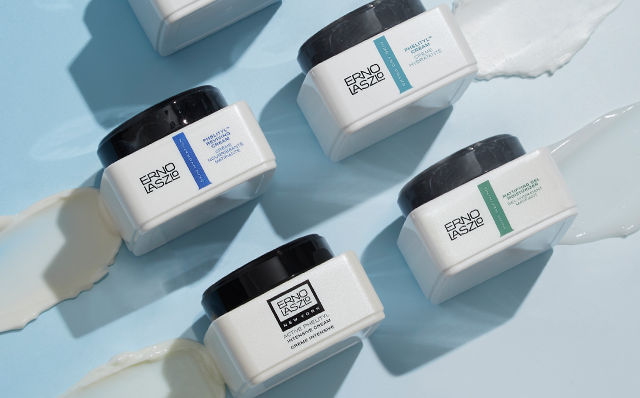
Sunscreen 101: SPF & Skincare
The golden rule of SPF in skincare is to apply sunscreen daily, regardless of cloud cover or time spent outdoors. While we know the sun looks and feels brighter on blue-sky days and beach vacations, invisible UV rays are always present in the atmosphere, piercing clouds, windows, and doing damage to our skin. Working SPF into your daily skincare ritual is a best practice that benefits skin in both the short and long term.

What does SPF Stand For?
SPF stands for “Sun Protection Factor.” The number that follows “SPF'' is determined by a calculation of protection and sun rays—it does not refer to the number of minutes the sun protection lasts.
Rather, the number tells you how long the sun’s UVB radiation would take to redden your skin, versus the amount of time without using any sunscreen. This means that SPF 30 has twice the UVB protection offered by SPF 15. However, this is reliant on applying the appropriate amount of sunscreen to your skin in an even manner and recommended frequency for optimal protection.

What does Broad Spectrum mean?
Broad-Spectrum protection is important as it defends skin from both UVA and UVB rays. UVA rays are associated with skin aging and are present year-round, shining through clouds and windows, penetrating skin and damaging cells. UVB rays are associated with sunburn and are mostly present during peak hours and at high altitudes. Broad-Spectrum protection works to shield skin from both of these harmful rays.

Mineral vs. Chemical Sunscreens
There are two types of sunscreen: mineral and chemical. Mineral sunscreen is also known as physical sunscreen. These sit on skin’s surface, creating a physical barrier to shield skin from UV rays. A chemical sunscreen will soak into the top layer of skin and absorb UV rays, effectively neutralizing their negative effects. Both are suitable for a range of skin types.
Chemical sunscreen filters need to be applied 30 minutes before going outdoors to let the ingredients fully bind to the skin.
Chemical filters include: Avobenzone, Homosalate, Oxybenzone, Octisalate, Octinoxate, Octocrylene, Omosalate
Physical sunscreens take effect immediately. They can be applied right before sun exposure to protect skin from UVA and UVB rays. With Zinc Oxide physical sunscreens, they can be nano or non-nano. This is a reference to the size of the particles used in the sunscreen. Nano-zinc particles will absorb and scatter UV light while slightly larger Non-nano particles won’t penetrate your skin, making it a safer and effective option.
Physical filters include: Zinc Oxide and/or Titanium Dioxide

Applying SPF: Best Practices
When protecting skin with SPF, apply about a nickel-sized amount or half-teaspoon per application. Use the two finger method to ensure skin receives the maximum protection as labeled on your sunscreen. This would be equivalent to “two fingers” of SPF, from the base of the index and middle fingers to the tips. This is the recommended amount for your face and neck.
Apply liberally to your face and neck 15 minutes before sun exposure. Reapply at least every 2 hours. Use a water resistant sunscreen if swimming or sweating.
SPF Rumors Debunked
Vitamin D: Sunscreen does not prevent vitamin D from absorbing into the skin. Wearing sunscreen everyday doesn’t mean you will get a Vitamin D deficiency.
SPF 100: If you use SPF 100, that doesn’t mean 100% protection. While SPF 100 is not common nor necessary, it only protects 99% of sun rays, while an SPF 50 protects 98% of rays. You can never achieve complete protection from the sun, even when using the appropriate amounts of sunscreen.
Makeup Mixology: Sunscreen and foundation don’t mix. When you mix SPF with makeup, you dilute the protection and lower the efficacy. Instead, complete your skincare ritual and apply SPF after your moisturizer or use a 2-in-1 moisturizer with SPF like Firmarine Moisturizer SPF 30. Allow the SPF to dry completely before layering makeup.
Go Beyond SPF
Our Sun Protection collection features a suite of moisturizing sunscreens that go beyond SPF, delivering broad-spectrum protection alongside targeted skincare benefits to support overall skin wellness and radiance.
If you aren’t sure which SPF is right for you, the Skin Cancer Foundation recommends using SPF 15 for indoor days with occasional exposure to rays and SPF 30 or higher for a day outdoors. Our SPF products deliver the recommended protection while providing additional benefits to suit your skin’s unique needs.
In this collection:
UV Defense Masque SPF 30
Mineral Sunscreen • UVA + UVB Protection
Our sheer, weightless sunscreen shields skin from the effects of UV rays and blue light while helping to strengthen the moisture barrier and smooth the look of aging skin.
Suitable for: All skin types, best for sensitive skin
Firmarine Moisturizer SPF 30
Chemical Sunscreen • UVA + UVB Protection
Our everyday rich, protective cream is formulated with mineral-drenched seawater and marine botanicals to improve skin’s firmness and elasticity.
Suitable for: All skin types
Phelityl Day Lotion SPF 15
Chemical Sunscreen • UVA + UVB Protection
Our lightweight, daily moisturizer is filled with essential vitamins to hydrate, soften, and soothe the skin while delivering broad-spectrum protection.
Suitable for: All skin types







Leave a comment
This site is protected by hCaptcha and the hCaptcha Privacy Policy and Terms of Service apply.